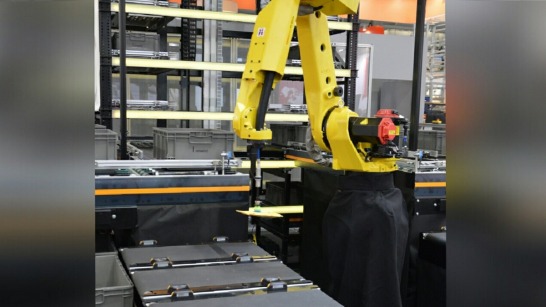We are used to seeing robots on assembly lines and in manufacturing, but they are still a relatively rare sight in warehouses.
Yes, that is because warehousing requires advanced technology. The holy grail of warehouse automation is fast, automated picking of a wide range of individual items. Equipping a robot with the optical capability and the right gripping mechanism to pick a bottle of shampoo or a T-Shirt from the shelf and place it on some means of transport, for example, is a highly complex challenge.
But more and more businesses with warehouses are turning to this technology.
The retail sector, in particular, is looking more closely at using robots, and trends such as online commerce are driving this. Customers want to buy more things online and demand increasingly faster delivery times. I believe that robots will soon be the deciding factor in retail, where competition is very much driven by cost and speed of delivery. We know that many retailers have already set a maximum time of 15 minutes between the placement of an order and shipping it.
Businesses could just employ more staff.
There are already large warehouses with several hundred people working on processing, picking, and packaging orders, and it has become increasingly difficult to find skilled workers for some key tasks. Even more will be needed if the trend towards online commerce continues as predicted – and everything is pointing that way. That is why I believe that the fear of jobs being lost to robots is misplaced: robots will increase the productivity of employees. Robots need people to supervise them, optimize the systems, and manage growth.


_image_546x307.jpg)
_image_546x307.jpg)